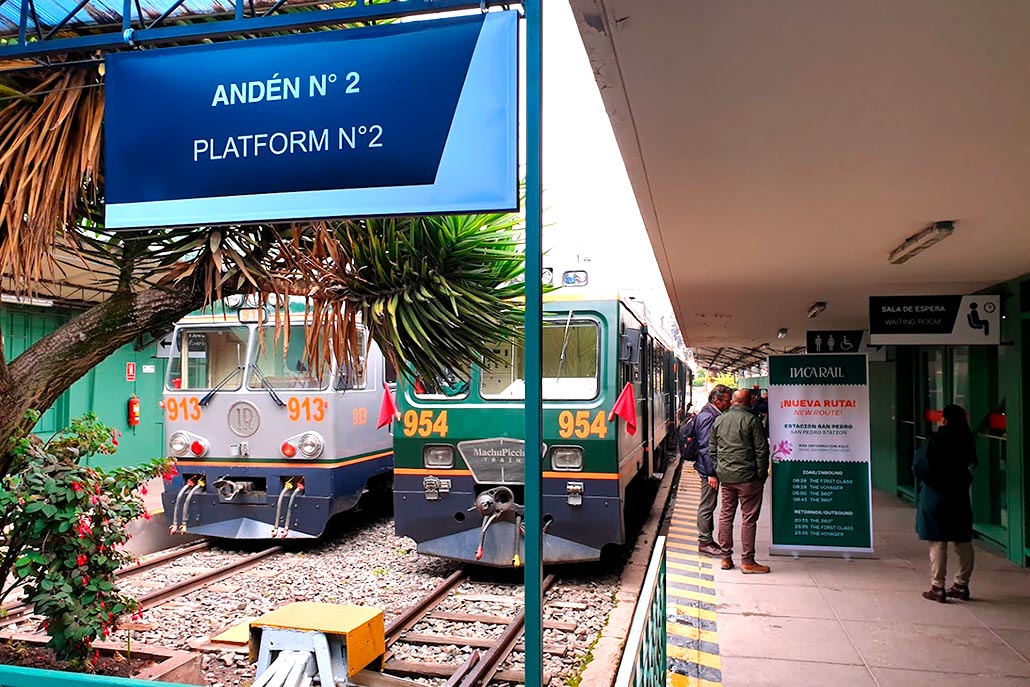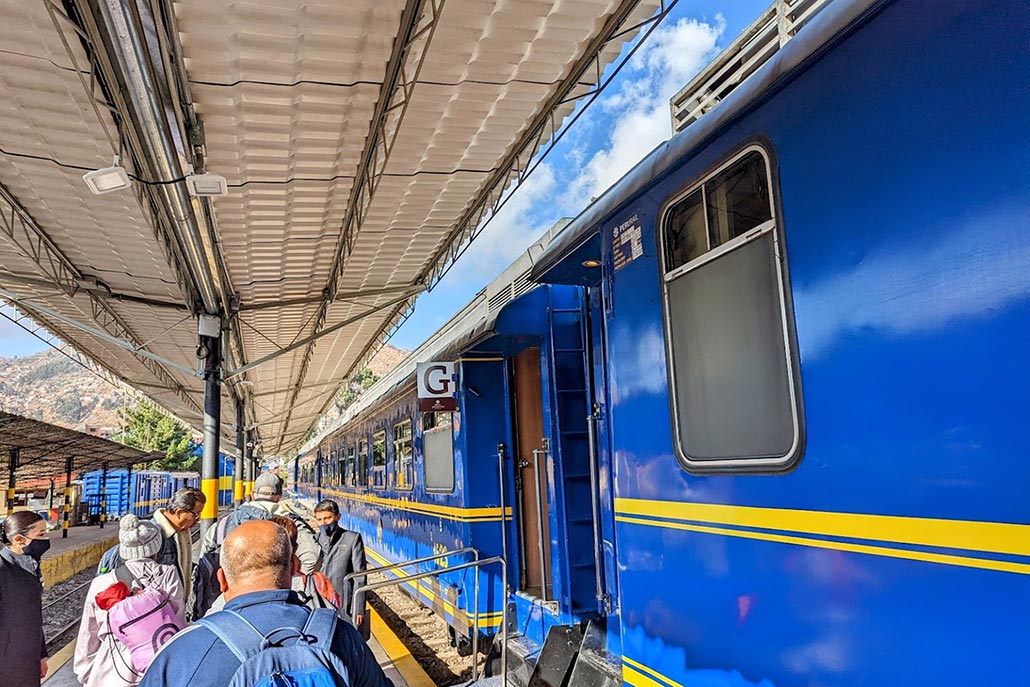San Pedro Station: The train station with the most history
San Pedro is one of the train stations that can be found in Cusco. Like the other stations, it is oriented to the transport service of national or international tourists who wish to visit Machu Picchu by train. It is important to mention that the train services to Machu Picchu have two companies in charge of making such an exciting trip. Now let us know more about this railway station which has important and historical data to its credit.
Content
History of the San Pedro Train Station
a) About the location
We all know that the transition period from Tawantinsuyo to being part of the Spanish colonies generated a change in the entire Cusco territory. Where the distribution of land and assets practically generated the formation of what would be the new city. Before going into more detail, it will be important to talk about Gonzalo Pizarro.
Gonzalo Pizarro was the younger brother of Francisco Pizarro, the main architect of one of the most important events of humanity. In other words, it was the cause of Spain being able to control new territories beyond its continent, adding to its colonies all of current Peru and Mexico along with the entire coastal strip of Central and South America. In the first years of invasion and then little by little controlled everything that is known today as Latin America.
One aspect that differentiated these two great conquests is that the Pizarro brothers decided to rise against the Spanish crown. This generated a series of civil wars and battles in which the royal armies won, consolidating the Spanish colony by almost 300. The colony was abolished years later thanks to the liberation campaigns of José de San Martín and Simón Bolívar. Before going any further, it is worth mentioning that after the failed uprising of the Pizarro brothers and their death, the territories that were granted to them in Cusco after conquering this city were confiscated. One of the delivered lands is where the current San Pedro Station was built. Being this territory granted to Gonzalo Pizarro.
b) First constructions
Cusco was founded in the year 1546 on February 12. The King of Spain Carlos I, how one of his first order he carried out was to build a hospital in the city. This Hospital would have the name Hospital de Naturales. It was a building with the characteristics of colonial architecture, the main function of this hospital was to treat the natives or natural settlers of old Cusco. At first, it covered a large territory, including the current San Pedro church next to the San Pedro station and the streets that connect both places. This construction ceased operations at the beginning of the 19th century. Let’s see a little more.
This hospital started working on March 27, 1556, the day it was founded. Being the main promoters of this construction the Viceroy Andrés Hurtado de Mendoza and the Marqués de Cañete. The latter was in charge of donating this territory, which he appropriated after the land and property of Gonzalo Pizarro were confiscated. Who, as we mentioned, was one of the first owners of this lot. From the date we mentioned, it functioned without any problem as a hospital until the earthquake of 1650. This natural disaster almost destroyed the hospital: only one room of the entire compound remained.
38 years later, the current church of San Pedro was built in its place. It is narrated that the hospital continued to function in some facilities of this church. Over the years and after the different battles that gave rise to the independence of the Spanish colonies. That is to say, during the change of regime from 1821 until the end of the 19th century, it stopped working as a hospital, since several reforms were made. Having a latent and little continuous operation. It was precisely in the year 1907 that it was decided to create railways and a station in Cusco.
c) Construction of the San Pedro train station
How we saw the San Pedro station is very close to the historic center of Cusco. Its construction dates back to 1907, by a law imposed by Congress to make the railway grow more and have better access to Cusco. This railway branch, in the first instance, would unite Cusco with the district of Santa Ana that currently belongs to the province of La Convención. After the progress of the construction of the railway, the section was advanced until the 1930s A year before, Aguas Calientes or Machu Picchu Pueblo could be connected with Cusco.
In 1972, the train station will be part of the Monumental Zone of Cusco, being declared a historical monument of Peru. Later precisely in the year 1983, it would be considered a Cultural Heritage of Humanity by UNESCO. In this way, it would acquire a better conservation of its facilities so that it can be used and visited in the future.
San Pedro Train Station Service
The San Pedro train station, as we mentioned throughout this article, is very close to the Plaza de Armas in Cusco. Exactly 10 minutes walking. Therefore, it is one of the main options to access train transportation services from Cusco to Aguas Calientes. A curious fact was that the use of this station was interrupted for a while since it is very close to a congested area. This caused some accidents, however, since 2019 the operation of trains has reopened, but only those that have an early morning schedule.
Regarding the maintenance of the San Pedro station, the managers are the company Ferrocarril Transandino SA. It has been performing this function since 1999 when the Peruvian State ceded the concession of the southern Peruvian railway line. At first, only PeruRail operated, occupying the entire section of the southern railway, that is, with trips from Cusco – Puno – Arequipa. Since 2019, the transport services of the Inca Rail trains managed to enter this station. The addition of these new trains gave a new breath to what it means to travel to Machu Picchu since now a greater variety of services and therefore prices are offered. A special factor is that you can make trips to Machu Picchu in just one day.
The two-way service is offered by both train companies, that is, PeruRail and Inca Rail. The bimodal service consists of making the trip in two different forms of transport. The first service or first section is a bus trip from Cusco to Ollantaytambo, while the second section is a train trip from Ollantaytambo to Aguas Calientes or Machu Picchu Pueblo. In this sense, some departures in bimodal service can be made from the San Pedro de Cusco station, that is, the trip would start by bus.
Is it really easy to get to the San Pedro Station?
The immediate answer is yes. Anyone who already knows the Plaza de Armas of Cusco could arrive without problems It is that from that place you can walk following the following streets: First, go straight on Mantas Street, and continue until you reach Santa Clara Street. While walking along Santa Clara Street, it will be possible to see a small square next to the San Pedro market, continue along it until you reach Cascaparo Street, which will be on the left. We continue walking for a couple of minutes and we will see the San Pedro Station.
If you are far from the Plaza de Armas, the best option is to take a taxi. All Cusqueños know the San Pedro train station. From any part of Cusco, they can transport you along with your belongings. At the San Pedro station, you can buy tickets on the train of your choice. Likewise, you can make a reservation for a later date and travel to Machu Picchu with complete peace of mind. Remember that the trains that leave from the San Pedro station.
Can I buy my train tickets at the San Pedro station online?
Yes, it is really simple and you will not have to queue or have the problem of not knowing how to think ahead of time about the exact date you want to visit Machu Picchu. In addition, several payment methods are supported, be it via credit card, debit card, and more. Next, we leave you the steps you must follow to purchase your train ticket to Machu Picchu:
- 1. Enter www.imachupicchu.com
- 2. Enter “Train to Machu Picchu”.
- 3. Choose trains from Cusco to Machu Picchu.
- 4. Select between the different trains and schedules.
- 5. Check availability.
- 6. Click on the “reserve” button.
- 7. Fill out the form and you’re done.


